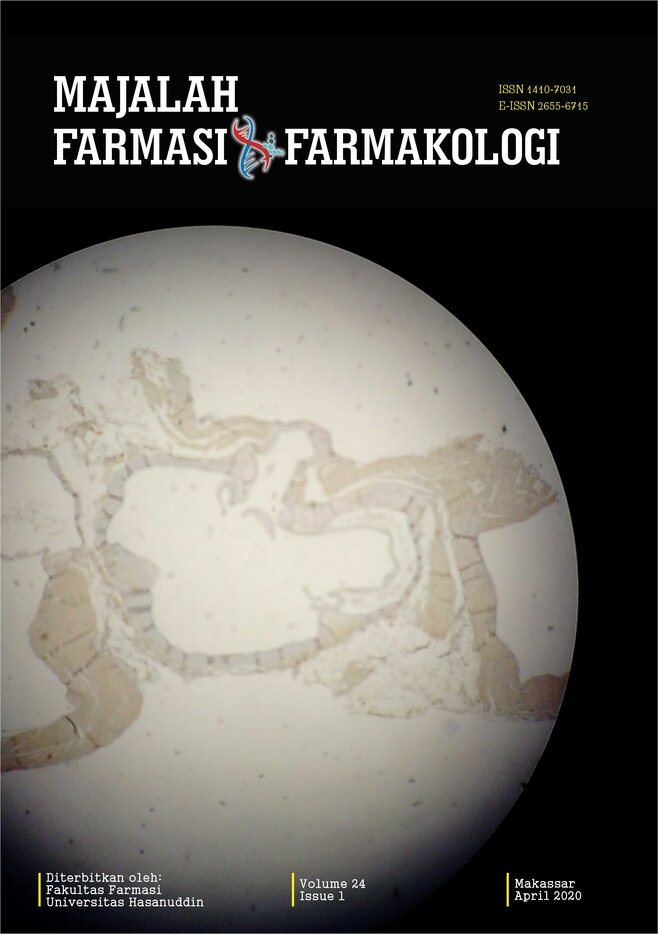POTENTIAL ANTICANCER ACTIVITY IN-VITRO FROM EXTRACT OF Turbinaria decurrens Bory
Abstract
Cancer is one of the biggest causes of death in the world, not least in Indonesia. Brown algae (T. decurrens Bory) is one of the marine organisms that can be used as a source of natural medicinal ingredients. The purpose of this study was to examine the potential cytotoxicity of extracts of n-hexane, ethyl acetate, and methanol from T. decurrens Bory against MCF-7 human breast cancer cells and H460 lung cancer cells. Samples were extracted using multilevel maceration methods using n-hexane, ethyl acetate, and methanol. Cytotoxicity activity was carried out by the MTT method (3- (4,5-dimethylthiazolyl-2) -2,5-diphenyltetrazolium bromide). The results showed that all extracts of T. decurrens Bory were potential as anticancer. Ethyl acetate extract can inhibit cancer cells at a concentration of 10 µg / mL with more than 50% cytotoxicity compared to other extracts, both against MCF-7 and H460 cells.Downloads
Published
Issue
Section
License
The copyright to this article is transferred to Universitas Hasanuddin (UNHAS) if and when the article is accepted for publication. The undersigned hereby transfers all rights in and to the paper including without limitation all copyrights to UNHAS. The undersigned hereby represents and warrants that the paper is original and that he/she is the author of the paper, except for material that is clearly identified as to its original source, with permission notices from the copyright owners where required. The undersigned represents that he/she has the power and authority to make and execute this assignment.
We declare that:
- This paper has not been published in the same form elsewhere.
- It will not be submitted anywhere else for publication prior to acceptance/rejection by this Journal.
- A copyright permission is obtained for materials published elsewhere and which require this permission for reproduction.
Furthermore, I/We hereby transfer the unlimited rights of publication of the above-mentioned paper in whole to UNHAS The copyright transfer covers the exclusive right to reproduce and distribute the article, including reprints, translations, photographic reproductions, microform, electronic form (offline, online) or any other reproductions of similar nature.
The corresponding author signs for and accepts responsibility for releasing this material on behalf of any and all co-authors. This agreement is to be signed by at least one of the authors who have obtained the assent of the co-author(s) where applicable. After submission of this agreement signed by the corresponding author, changes of authorship or in the order of the authors listed will not be accepted.


